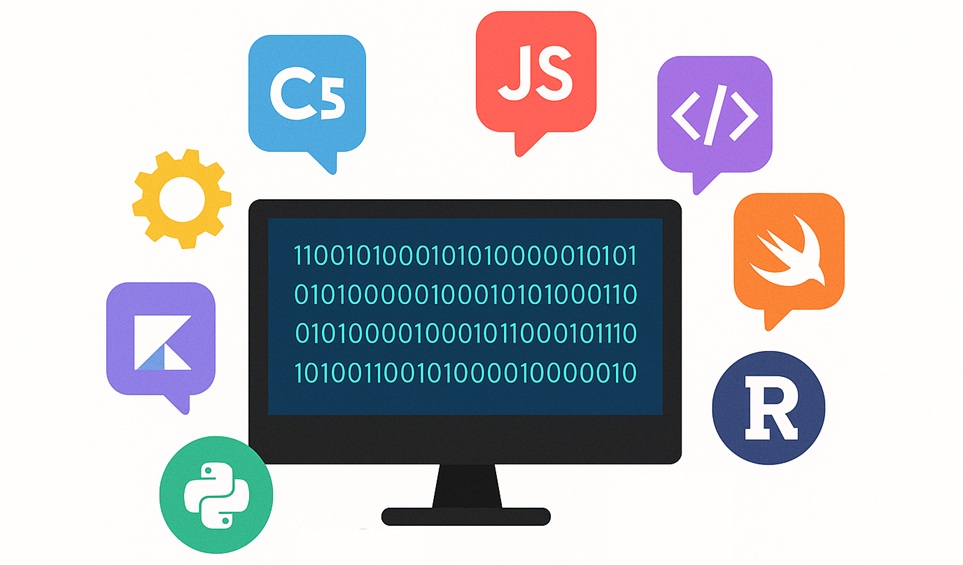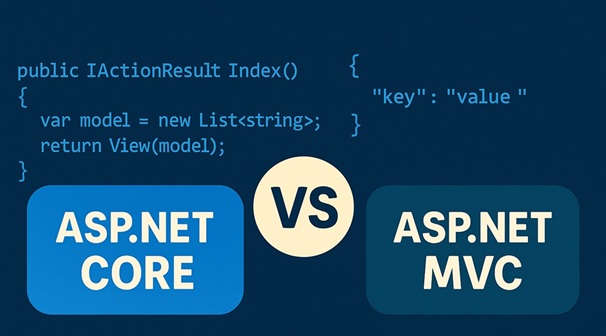“Be lazy but efficient” — a phrase I constantly heard from my boss when I was working as kitchen staff in a summer camp during my student years. A desire to take as little effort as possible can be a driver of innovation as long as it results in a more efficient spending of time, money, and labor.
And you won’t deny that laziness through efficiency is inherent to low code development: you are able to build basic chunks of software without writing a code at all. There are numerous low code software development frameworks, but which one to choose? Fret not! In this article we’ll give a critical review to top 10 low-code frameworks, so you can decide which is the one you need to make your project truly lazy but efficient.
Top 10 low-code development platforms
So, please welcome: 10 best low-code development frameworks! Let’s discuss them without any further ado:

WebFlow
WebFlow is a no-code web design and development platform that enables users to visually create responsive websites. It combines design flexibility with built-in CMS functionality and hosting, making it ideal for designers and businesses seeking to build custom websites without the need for complex coding.
Key features:
- Visual web design with drag-and-drop tools, animations, and interactions
- CMS for dynamic content management
- Fully integrated ecommerce functionality
- Responsive design that adapts to all screen sizes
- High-speed hosting with SSL and automatic backups
- Option to embed custom HTML, CSS, and JavaScript for added flexibility
Ideal for:
- Designers and creatives who want control over the site design without coding.
- Agencies looking to build professional sites quickly with easy client customization options.
- Small to medium-sized businesses in need of professional websites without a development team.
Common use cases:
- Personal portfolios to showcase work and design projects.
- Small business websites that need to reflect brand identity.
- eCommerce stores to sell products with full design control.
- Content-driven sites like blogs or news outlets, with dynamic and frequently updated content.

Bubble.io
Bubble.io is a powerful no-code platform for building fully functional web applications, making it especially useful for entrepreneurs and startups. It allows users to design both the frontend and backend of web apps, including complex workflows, database management, and API integrations, all without writing code.
Key features:
- Drag-and-drop interface for designing user interfaces and workflows
- Built-in database management for storing and processing data
- Custom logic and workflow capabilities for app functionality
- API integrations to connect third-party services or build custom workflows
- Responsive design for mobile and tablet-friendly applications
- User authentication tools for managing sign-ups, logins, and permissions
Ideal for:
- Entrepreneurs and startups looking to rapidly launch web apps without a dev team.
- Non-technical founders who need to bring product ideas to life with minimal technical barriers.
- Teams focused on building prototypes or MVPs to test and validate app concepts quickly.
Common use cases:
- Marketplaces for buying and selling goods or services.
- SaaS applications for delivering subscription-based tools or services.
- Social networking platforms with user profiles, messaging, and feeds.
- Admin dashboards for managing data and monitoring business metrics.

OutSystems
OutSystems is a low-code development platform that operates as an enterprise-grade development solution through low-code mechanics for building web and mobile applications. The solution provides quick application creation through user-friendly drag-and-drop tools and structured workflows while supporting native deployment to cloud environments. The application development platform of OutSystems includes features for front-end and back-end work which enables users to create sophisticated systems without advanced coding knowledge.
Key features:
- Full-stack development (front-end & back-end)
- Integration with existing systems (APIs, databases)
- Advanced analytics and reporting
- Cloud, on-premises, or hybrid deployment options
- Pre-built templates and widgets
- AI-powered insights for optimization
- Mobile app support (native and web)
Ideal for:
- Enterprises looking for scalable, high-performance applications.
- Companies needing cross-platform (mobile & web) solutions.
- Organizations requiring strong integration with legacy systems and databases.
Common use cases:
- Enterprise resource planning (ERP) systems
- Customer relationship management (CRM) systems
- Workflow automation applications
- Mobile apps for employee engagement or field operations

Mendix
Mendix is an agile low-code platform for building scalable, enterprise-level applications. It supports a wide range of development needs, from basic apps to complex, mission-critical solutions. The platform emphasizes collaboration between business and IT teams, streamlining development and deployment processes.
Key features:
- Multi-cloud support (AWS, Azure, Google Cloud)
- Visual development tools with drag-and-drop components
- Full-stack development (frontend, backend, and database)
- AI-driven app optimization
- Real-time collaboration tools
- Built-in DevOps and CI/CD pipeline support
- Integrated business logic and workflow tools
Ideal for:
- Large organizations with complex app requirements.
- Companies looking for real-time collaboration between business users and IT.
- Teams focused on agile development practices.
Common use cases:
- Enterprise resource planning (ERP)
- Supply chain management apps
- Customer service automation tools
- IoT-enabled apps for industry 4.0

Appian
Building business-centric applications through low-code development tools enables Appian to assist companies with their operations by optimizing case management and BPM and workflow automation needs. Appian stands out as a platform which unites process automation capabilities with low-code development tools to serve companies that need workflow optimization.
Key features:
- Process automation and BPM tools
- Drag-and-drop visual interface
- Cloud-native and hybrid deployment options
- Real-time collaboration and document management
- Integration with third-party systems and APIs
- Built-in AI capabilities for automation
Ideal for:
- Businesses looking to automate complex processes and workflows.
- Companies that need a fast, scalable solution for process-driven applications.
- Organizations with high compliance requirements (e.g., finance, healthcare).
Common use cases:
- Claims management systems (insurance)
- HR onboarding solutions
- Customer service and ticketing systems
- Compliance and regulatory management

Microsoft Power Apps
Microsoft Power Apps is part of the broader Microsoft Power Platform, enabling users to build apps without code or with minimal coding. It integrates seamlessly with other Microsoft products like Office 365, Dynamics 365, and Azure, making it an excellent choice for organizations already invested in the Microsoft ecosystem.
Key features:
- Integration with Microsoft 365, Dynamics 365, and Azure
- Drag-and-drop interface for building apps
- Pre-built templates and connectors
- Automated workflows with Power Automate
- Mobile app support (native apps for iOS, Android, and web)
- Customizable with Power Fx, a low-code programming language
Ideal for:
- Organizations already using Microsoft products.
- Teams looking for a fast, easy way to automate business processes.
- Non-technical users who need to create custom apps quickly.
Common use cases:
- Internal employee apps (time tracking, task management)
- Customer-facing apps (self-service portals)
- Custom CRM systems
- Data collection and reporting apps

Salesforce Lightning
Salesforce Lightning serves as a development framework to produce applications that operate on the Salesforce platform. The system provides businesses with tools to construct web and mobile applications that have high dynamic capabilities without substantial coding. Microsoft Digital.ai is perfect for organizations whose business operations heavily depend on Salesforce CRM solutions and require additional custom application development through Salesforce Lightning.
Key features:
- Built on the Salesforce ecosystem (CRM, analytics, etc.)
- Lightning App Builder for drag-and-drop app creation
- Component-based architecture
- Real-time collaboration and workflow automation
- Integration with other Salesforce services (Marketing Cloud, Service Cloud, etc.)
- Mobile-first design
Ideal for:
- Businesses already using Salesforce for CRM.
- Companies that need to build custom apps tightly integrated with Salesforce data.
- Teams that need to create dynamic, responsive user interfaces.
Common use cases:
- Custom Salesforce CRM apps
- Customer service management systems
- Marketing automation apps
- Sales pipeline tracking tools

Betty Blocks
Betty Blocks is a no-code platform that allows users to quickly build business applications without writing code. Its intuitive drag-and-drop interface and ability to integrate with various third-party services make it a great option for companies looking to develop apps rapidly and iteratively.
Key features:
- Completely no-code development environment
- Pre-built blocks for common business logic
- Integration with external systems (APIs, databases)
- Visual modeling for workflow automation
- Cloud-native architecture
- Real-time collaboration tools
Ideal for:
- Non-technical users who need to quickly create apps.
- Businesses that want to empower citizen developers.
- Companies looking for fast, cost-effective app development.
Common use cases:
- Business process automation
- Internal team collaboration tools
- Custom CRM and ERP apps
- Data-driven decision-making apps

Zoho Creator
As a low-code platform Zoho Creator enables businesses to develop custom apps to automate their operations while managing data and controlling business procedures. Many businesses value Creator for its intuitive graphical user interface that helps qualified professionals and non-experts design applications that meet their specific needs.
Key features:
- Drag-and-drop app builder
- Pre-built templates for common business apps
- Multi-platform support (iOS, Android, Web)
- Custom workflows and automation
- Data visualization and reporting tools
- Extensive integration options (Zoho suite, third-party apps)
Ideal for:
- Small to medium-sized businesses.
- Teams looking for a simple, affordable low-code platform.
- Users who need to integrate with other Zoho products.
Common use cases:
- Inventory management systems
- Employee management applications
- Custom CRM and lead tracking systems
- Project management and task tracking tools

Quick Base
Quick Base is a low-code application building platform that allows businesses to automate workflows, streamline processes, and create custom apps without heavy coding. It emphasizes flexibility and scalability, making it suitable for various industries, including finance, healthcare, and manufacturing.
Key features:
- Visual interface for creating custom workflows and applications
- Integration with external systems (APIs, databases)
- Real-time reporting and analytics
- Multi-device support (web and mobile)
- Strong security features (role-based access, encryption)
Ideal for:
- Businesses that need to automate workflows and processes.
- Enterprises with specific app needs that aren’t met by off-the-shelf software.
- Teams in industries with complex data requirements (e.g., healthcare, manufacturing).
Common use cases:
- Process management and workflow automation
- Custom CRM and project management tools
- Inventory and asset tracking systems
- Data collection and reporting tools

Kiss Flower
Low-code platform Kissflow focuses its operations on both process and workflow automation functions. The platform speeds up application development through its low-code technology framework and lets business operators build apps using its no-code interface which automates manual processes.
Key features:
- Drag-and-drop app builder for workflows
- Process automation and case management
- Built-in reporting and analytics
- Integration with third-party tools and systems
- Mobile app support
- Collaboration tools for team communication
Ideal for:
- Businesses looking to automate and optimize business processes.
- Teams in need of simple, intuitive tools for building process-centric applications.
- Organizations requiring low-code solutions for operational efficiency.
Common use cases:
- HR and recruitment process automation
- Document management and approval workflows
- Customer service case management
- Marketing campaign automation

Pega Systems
Pega Systems is a powerful low-code application development platform that specializes in customer engagement and business process automation. It offers advanced AI-powered features to help businesses design adaptive and intelligent apps that automate processes and improve customer experiences.
Key features:
- Process automation and case management
- AI-driven decisioning and analytics
- Cloud-native deployment
- Integration with various enterprise systems
- Advanced workflow and decisioning tools
- Real-time customer engagement
Ideal for:
- Large enterprises focused on customer experience and process automation.
- Organizations with complex business workflows and decisioning needs.
- Businesses looking for AI-driven automation and real-time data insights.
Common use cases:
- Customer service and support automation
- Intelligent workflow automation
- CRM and customer engagement applications
- Compliance and regulatory process management
Build your low-code solution together with TwinCore
Whichever low-code platform you will choose, you may still need professional help be it design or full-cycle development of your product. If you feel your project gets stuck because of technical challenges, TwinCore is always ready to help you with our low code development services. With 100+ successful projects behind our backs and team of qualified experts in low-code application development, TwinCore will guide you through your entire project. Just get in touch with us and we’ll get back to you to discuss the details of your request.

 LinkedIn
LinkedIn
 Twitter
Twitter
 Facebook
Facebook
 Youtube
Youtube







